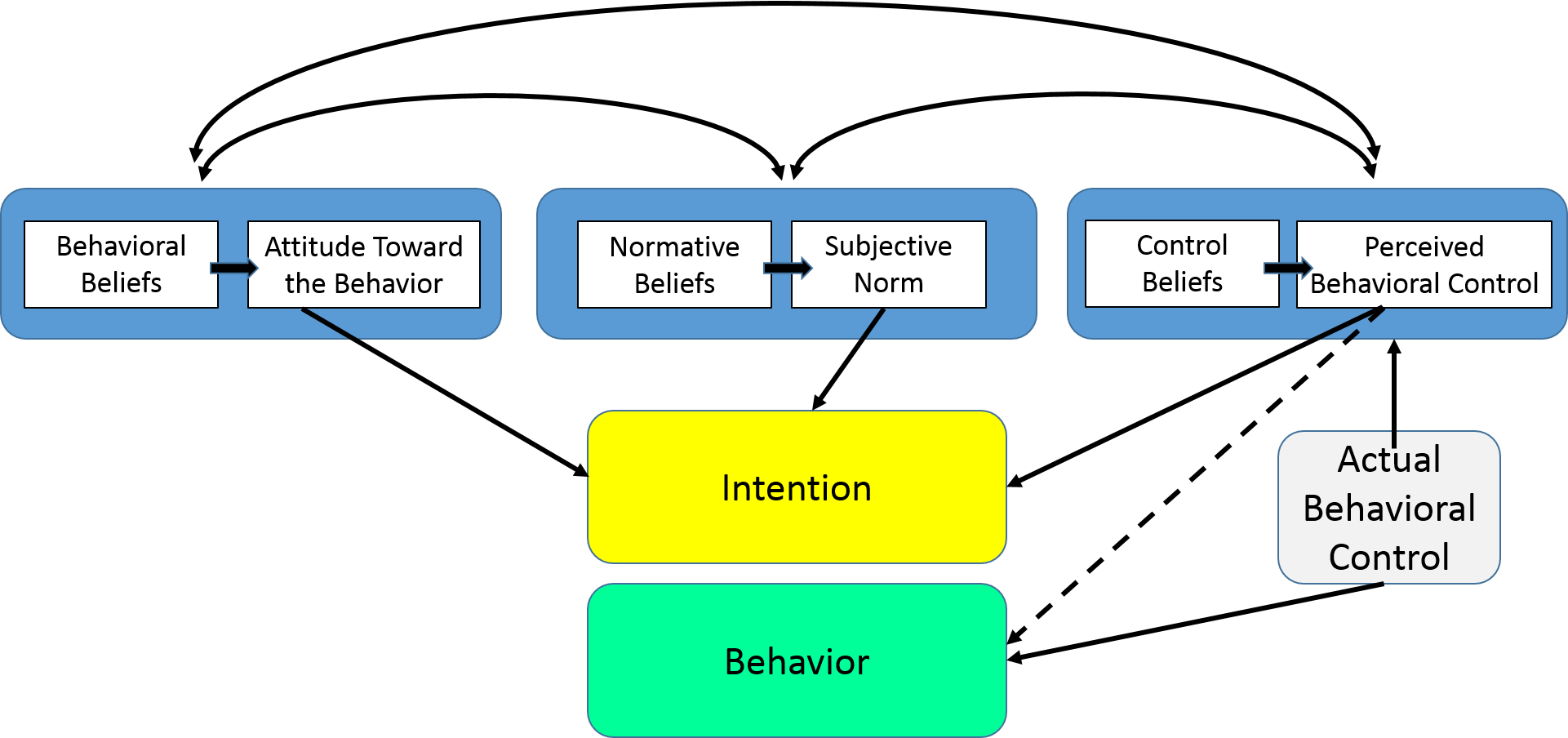The Theory of Planned Behavior
The Theory of Planned Behavior (TPB) started as the Theory of Reasoned Action in 1980 to predict an individual's intention to engage in a behavior at a specific time and place. The theory was intended to explain all behaviors over which people have the ability to exert self-control. The key component to this model is behavioral intent; behavioral intentions are influenced by the attitude about the likelihood that the behavior will have the expected outcome and the subjective evaluation of the risks and benefits of that outcome.
The TPB has been used successfully to predict and explain a wide range of health behaviors and intentions including smoking, drinking, health services utilization, breastfeeding, and substance use, among others. The TPB states that behavioral achievement depends on both motivation (intention) and ability (behavioral control). It distinguishes between three types of beliefs - behavioral, normative, and control. The TPB is comprised of six constructs that collectively represent a person's actual control over the behavior.
- Attitudes - This refers to the degree to which a person has a favorable or unfavorable evaluation of the behavior of interest. It entails a consideration of the outcomes of performing the behavior.
- Behavioral intention - This refers to the motivational factors that influence a given behavior where the stronger the intention to perform the behavior, the more likely the behavior will be performed.
- Subjective norms - This refers to the belief about whether most people approve or disapprove of the behavior. It relates to a person's beliefs about whether peers and people of importance to the person think he or she should engage in the behavior.
- Social norms - This refers to the customary codes of behavior in a group or people or larger cultural context. Social norms are considered normative, or standard, in a group of people.
- Perceived power - This refers to the perceived presence of factors that may facilitate or impede performance of a behavior. Perceived power contributes to a person's perceived behavioral control over each of those factors.
- Perceived behavioral control - This refers to a person's perception of the ease or difficulty of performing the behavior of interest. Perceived behavioral control varies across situations and actions, which results in a person having varying perceptions of behavioral control depending on the situation. This construct of the theory was added later, and created the shift from the Theory of Reasoned Action to the Theory of Planned Behavior.

Limitations of the Theory of Planned Behavior
There are several limitations of the TPB, which include the following:
- It assumes the person has acquired the opportunities and resources to be successful in performing the desired behavior, regardless of the intention.
- It does not account for other variables that factor into behavioral intention and motivation, such as fear, threat, mood, or past experience.
- While it does consider normative influences, it still does not take into account environmental or economic factors that may influence a person's intention to perform a behavior.
- It assumes that behavior is the result of a linear decision-making process, and does not consider that it can change over time.
- While the added construct of perceived behavioral control was an important addition to the theory, it doesn't say anything about actual control over behavior.
- The time frame between "intent" and "behavioral action" is not addressed by the theory.
The TPB has shown more utility in public health than the Health Belief Model, but it is still limiting in its inability to consider environmental and economic influences. Over the past several years, researchers have used some constructs of the TPB and added other components from behavioral theory to make it a more integrated model. This has been in response to some of the limitations of the TPB in addressing public health problems.


